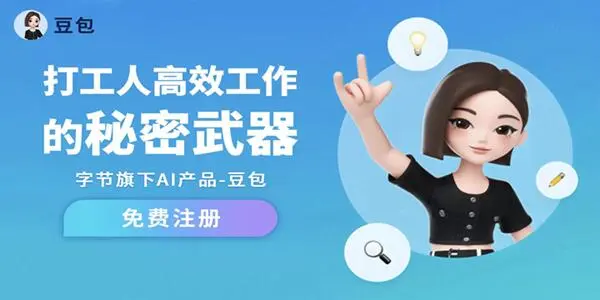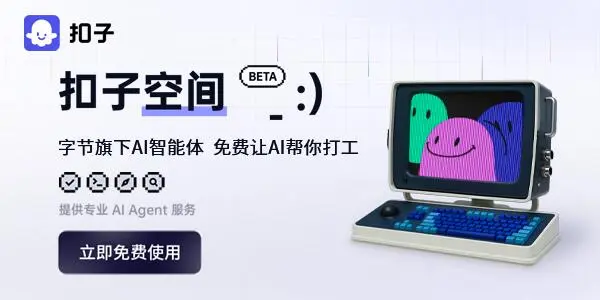写在前面
我们会讲以下七种组件通信方式:
- props
- emit
- v-model
- refs
- provide/inject
- eventBus
- vuex/pinia
举个例子
本文将使用如下演示,如下图所示:

上图中,列表和输入框分别是父组件和子组件。根据不同的通信方式,会调整父子组件。
1、Props
props 是 Vue 中最常见的父子通信方式,使用起来也比较简单。
根据上面的demo,我们在父组件中定义了数据和对数据的操作,子组件只渲染一个列表。
父组件代码如下:
<template>
<!-- child component -->
<child-components :list="list"></child-components>
<!-- parent component -->
<div class="child-wrap input-group">
<input
v-model="value"
type="text"
class="form-control"
placeholder="Please enter"
/>
<div class="input-group-append">
<button @click="handleAdd" class="btn btn-primary" type="button">
add
</button>
</div>
</div>
</template>
<script setup>
import { ref } from 'vue'
import ChildComponents from './child.vue'
const list = ref(['JavaScript', 'html', 'css'])
const value = ref('')
// event handling function triggered by add
const handleAdd = () => {
list.value.push(value.value)
value.value = ''
}
</script>
子组件只需要渲染父组件传递的值。
代码如下:
<template>
<ul class="parent list-group">
<li class="list-group-item" v-for="i in props.list" :key="i">{{ i }}</li>
</ul>
</template>
<script setup>
import { defineProps } from 'vue'
const props = defineProps({
list: {
type: Array,
default: () => [],
},
})
</script>2、Emit
Emit也是Vue中最常见的组件通信方式,用于子组件向父组件传递消息。
我们在父组件中定义列表,子组件只需要传递添加的值。
子组件代码如下:
<template>
<div class="child-wrap input-group">
<input
v-model="value"
type="text"
class="form-control"
placeholder="Please enter"
/>
<div class="input-group-append">
<button @click="handleSubmit" class="btn btn-primary" type="button">
add
</button>
</div>
</div>
</template>
<script setup>
import { ref, defineEmits } from 'vue'
const value = ref('')
const emits = defineEmits(['add'])
const handleSubmit = () => {
emits('add', value.value)
value.value = ''
}
</script>
点击子组件中的【添加】按钮后,我们会发出一个自定义事件,并将添加的值作为参数传递给父组件。
父组件代码如下:
<template>
<!-- parent component -->
<ul class="parent list-group">
<li class="list-group-item" v-for="i in list" :key="i">{{ i }}</li>
</ul>
<!-- child component -->
<child-components @add="handleAdd"></child-components>
</template>
<script setup>
import { ref } from 'vue'
import ChildComponents from './child.vue'
const list = ref(['JavaScript', 'HTML', 'CSS'])
// event handling function triggered by add
const handleAdd = value => {
list.value.push(value)
}
</script>
在父组件中,只需要监听子组件的自定义事件,然后执行相应的添加逻辑即可。
3、v-model
v-model 是 Vue 中一个优秀的语法糖,比如下面的代码。
<ChildComponent v-model:title="pageTitle" />
这是以下代码的简写形式
<ChildComponent :title="pageTitle" @update:title="pageTitle = $event" />
这确实容易了很多。现在我们将使用 v-model 来实现上面的示例。
子组件
<template>
<div class="child-wrap input-group">
<input
v-model="value"
type="text"
class="form-control"
placeholder="Please enter"
/>
<div class="input-group-append">
<button @click="handleAdd" class="btn btn-primary" type="button">
add
</button>
</div>
</div>
</template>
<script setup>
import { ref, defineEmits, defineProps } from 'vue'
const value = ref('')
const props = defineProps({
list: {
type: Array,
default: () => [],
},
})
const emits = defineEmits(['update:list'])
// Add action
const handleAdd = () => {
const arr = props.list
arr.push(value.value)
emits('update:list', arr)
value.value = ''
}
</script>
在子组件中,我们先定义props和emits,添加完成后再发出指定的事件。
注意:update:*是Vue中固定的写法,*代表props中的一个属性名。
在父组件中使用比较简单,代码如下:
<template>
<!-- parent component -->
<ul class="parent list-group">
<li class="list-group-item" v-for="i in list" :key="i">{{ i }}</li>
</ul>
<!-- child component -->
<child-components v-model:list="list"></child-components>
</template>
<script setup>
import { ref } from 'vue'
import ChildComponents from './child.vue'
const list = ref(['JavaScript', 'HTML', 'CSS'])
</script>4、Refs
使用api选项时,我们可以通过this.$refs.name获取指定的元素或组件,但在组合API中不行。如果我们想通过ref获取,需要定义一个同名的Ref对象,在组件挂载后可以访问。
示例代码如下:
<template>
<ul class="parent list-group">
<li class="list-group-item" v-for="i in childRefs?.list" :key="i">
{{ i }}
</li>
</ul>
<!-- The value of the child component ref is the same as that in the <script> -->
<child-components ref="childRefs"></child-components>
<!-- parent component -->
</template>
<script setup>
import { ref } from 'vue'
import ChildComponents from './child.vue'
const childRefs = ref(null)
</script>
子组件代码如下:
<template>
<div class="child-wrap input-group">
<input
v-model="value"
type="text"
class="form-control"
placeholder="Please enter"
/>
<div class="input-group-append">
<button @click="handleAdd" class="btn btn-primary" type="button">
add
</button>
</div>
</div>
</template>
<script setup>
import { ref, defineExpose } from 'vue'
const list = ref(['JavaScript', 'HTML', 'CSS'])
const value = ref('')
// event handling function triggered by add
const handleAdd = () => {
list.value.push(value.value)
value.value = ''
}
defineExpose({ list })
</script>
注意:默认情况下,setup 组件是关闭的,通过模板 ref 获取组件的公共实例。如果需要公开,需要通过defineExpose API 公开。
5、provide/inject
provide/inject是 Vue 中提供的一对 API。无论层级多深,API 都可以实现父组件到子组件的数据传递。
示例代码如下所示:
父组件
<template>
<!-- child component -->
<child-components></child-components>
<!-- parent component -->
<div class="child-wrap input-group">
<input
v-model="value"
type="text"
class="form-control"
placeholder="Please enter"
/>
<div class="input-group-append">
<button @click="handleAdd" class="btn btn-primary" type="button">
add
</button>
</div>
</div>
</template>
<script setup>
import { ref, provide } from 'vue'
import ChildComponents from './child.vue'
const list = ref(['JavaScript', 'HTML', 'CSS'])
const value = ref('')
// Provide data to child components.
provide('list', list.value)
// event handling function triggered by add
const handleAdd = () => {
list.value.push(value.value)
value.value = ''
}
</script>
子组件
<template>
<ul class="parent list-group">
<li class="list-group-item" v-for="i in list" :key="i">{{ i }}</li>
</ul>
</template>
<script setup>
import { inject } from 'vue'
// Accept data provided by parent component
const list = inject('list')
</script>
注意:使用 provide 进行数据传输时,尽量使用 readonly 封装数据,避免子组件修改父组件传递的数据。
6、eventBus
Vue 3 中移除了 eventBus,但可以借助第三方工具来完成。Vue 官方推荐使用 mitt 或 tiny-emitter。
在大多数情况下,不建议使用全局事件总线来实现组件通信。虽然比较简单粗暴,但是维护事件总线从长远来看是个大问题,这里就不解释了。有关详细信息,您可以阅读特定工具的文档。
7、vuex/pinia
Vuex 和 Pinia 是 Vue 3 中的状态管理工具,使用这两个工具可以轻松实现组件通信。由于这两个工具都比较强大,这里就不一一展示了。有关详细信息,请参阅文档。
来源: WEB前端开发社区
本文内容仅供个人学习/研究/参考使用,不构成任何决策建议或专业指导。分享/转载时请标明原文来源,同时请勿将内容用于商业售卖、虚假宣传等非学习用途哦~感谢您的理解与支持!

Vuetify基于vue2.0,为移动而生的组件框架
Vuetify 支持SSR(服务端渲染),SPA(单页应用程序),PWA(渐进式Web应用程序)和标准HTML页面。 Vuetify是一个渐进式的框架,试图推动前端开发发展到一个新的水平。
Vue中插槽的作用_Vue组件插槽的使用以及调用组件内的方法
通过给组件传递参数, 可以让组件变得更加可扩展, 组件内使用props接收参数,slot的使用就像它的名字一样, 在组件内定义一块空间。在组件外, 我们可以往插槽里填入任何元素。slot-scope的作用就是把组件内的数据带出来
react 函数子组件(Function ad Child Component)
函数子组件(FaCC )与高阶组件做的事情很相似, 都是对原来的组件进行了加强,类似装饰者。FaCC,利用了react中children可以是任何元素,包括函数的特性,那么到底是如何进行增强呢?

Vue和React组件之间的传值方式
在现代的三大框架中,其中两个Vue和React框架,组件间传值方式有哪些?组件间的传值是灵活的,可以有多种途径,父子组件同样可以使用EventBus,Vuex或者Redux
vue.js自定义组件directives
自定义指令:以v开头,如:v-mybind。bind的作用是定义一个在绑定时执行一次的初始化动作,观察bind函数,它将指令绑定的DOM作为一个参数,在函数体中,直接操作DOM节点为input赋值。
vue中prop属性传值解析
prop的定义:在没有状态管理机制的时候,prop属性是组件之间主要的通信方式,prop属性其实是一个对象,在这个对象里可以定义一些数据,而这些数据可以通过父组件传递给子组件。 prop属性中可以定义属性的类型,也可以定义属性的初始值。
Web组件简介
Web组件由三个独立的技术组成:自定义元素。很简单,这些是完全有效的HTML元素,包含使用一组JavaScript API制作的自定义模板,行为和标记名称(例如,<one-dialog>)。
web组件调用其他web资源
web组件可以直接或间接的调用其他web资源。一个web组件通过内嵌返回客户端内容的另一个web资源的url来间接调用其他web资源。在执行时,一个web资源通过包含另一个资源的内容或者转发请求到另一个资源直接调用。
vue中如何实现的自定义按钮
在实际开发项目中,有时我们会用到自定义按钮;因为一个项目中,众多的页面,为了统一风格,我们会重复用到很多相同或相似的按钮,这时候,自定义按钮组件就派上了大用场,我们把定义好的按钮组件导出,在全局引用,就可以在其他组件随意使用啦,这样可以大幅度的提高我们的工作效率。
Vue子组件调用父组件的方法
Vue中子组件调用父组件的方法,这里有三种方法提供参考,第一种方法是直接在子组件中通过this.$parent.event来调用父组件的方法,第二种方法是在子组件里用$emit向父组件触发一个事件,父组件监听这个事件就行了。
内容以共享、参考、研究为目的,不存在任何商业目的。其版权属原作者所有,如有侵权或违规,请与小编联系!情况属实本人将予以删除!




